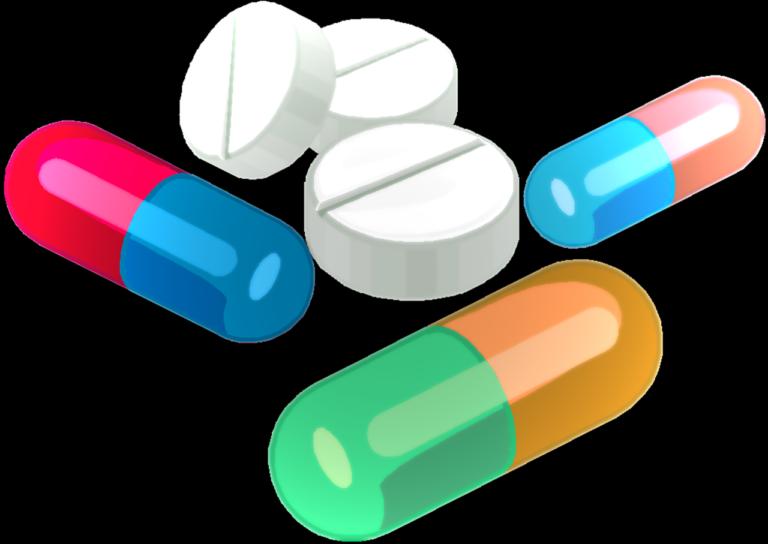When it comes to prescription drugs, you may have heard the terms “generic” and “brand name.” But what exactly do these terms mean, and how do they differ? In this comprehensive guide, we will explore the distinctions between generic and brand-name prescription drugs, including their efficacy, cost, approval process, and more. Whether you’re a healthcare professional or a patient seeking to make informed decisions about your medication, this article will provide you with the knowledge you need to understand the world of generic and brand-name medicines.
Understanding generic medicines
Approval process
The U.S. Food and Drug Administration (FDA) defines a generic drug as a medication created to be the same as an already marketed brand-name drug in dosage form, safety, strength, route of administration, quality, performance characteristics, and intended use. In simpler terms, generic drugs are essentially identical to their brand-name counterparts in terms of their active ingredients and how they work in the body.
To gain FDA approval, generic medications must go through a rigorous review process that ensures their bioequivalence to the brand-name drugs they replicate. This means that generic drugs must contain the same active ingredient as the brand-name drug, although there may be slight differences in inactive ingredients. However, these differences have been proven to not affect how the medication works.
Cost Savings and Market Competition
One of the major advantages of generic drugs is their significantly lower cost than brand-name drugs. Generic drugs are generally 80% to 85% less expensive than their brand-name counterparts. This cost difference can be attributed to several factors.
Firstly, generic drug manufacturers do not have to invest in extensive research and development or conduct expensive clinical trials like brand-name drug manufacturers. This reduction in upfront costs allows generic drug manufacturers to offer their products at a lower price.
Secondly, the presence of multiple manufacturers producing generic versions of the same drug creates market competition. This competition further drives down prices, benefiting consumers and the healthcare system as a whole. The U.S. healthcare system saved almost $2 trillion from 2009 to 2019 due to the use of generic drugs.
Appearance and Variability
While generic drugs are designed to be therapeutically equivalent to brand-name drugs, there may be slight differences in appearance. United States trademark laws prohibit generic drugs from looking the same as their brand-name counterparts. However, the FDA closely regulates these differences to ensure they do not affect the drug’s safety, efficacy, or how it works in the body.
It’s important to note that despite slight variations in appearance, generic drugs are held to the same standards of quality, purity, and performance as brand-name products. The FDA conducts extensive reviews to ensure that generic drugs meet these standards.
Exploring brand-name drugs
Definition and approval process
Brand-name drugs are the original medications developed by pharmaceutical companies. They are typically the first version of a drug to receive FDA approval and enter the market. Brand-name drugs are given a unique name by the manufacturer and are protected by patents that allow a drug company to remain the exclusive seller for a certain period. When a company develops a new drug, it typically receives a patent that lasts 20 years.
The approval process for brand-name drugs involves extensive preclinical and clinical testing to demonstrate their safety and efficacy. These tests can be costly and time-consuming, as they involve studying the drug’s effects in animals and humans. Once a brand-name drug receives FDA approval, it can be marketed and sold under its unique name.
Pricing
Brand-name drugs are generally more expensive than generic drugs. This higher cost can be attributed to several factors. Firstly, the research and development costs associated with bringing a brand-name drug to market are significant. These costs include conducting extensive clinical trials and ensuring the drug’s safety and efficacy.
Additionally, brand-name drugs have exclusivity rights for a certain period. During this period, other manufacturers are not allowed to produce generic versions of the drug. This lack of competition allows the manufacturer to set higher prices.
Comparing generic and brand drugs
Efficacy and safety
One common concern among patients is whether generic drugs are as effective and safe as brand-name versions. The FDA has stated that generic drugs are as effective and safe as their brand-name counterparts. Before approving a generic drug, the FDA ensures that it provides the same clinical benefits and is as safe and effective as its replicating brand-name drug.
Studies have shown that generic drugs have comparable medical results for chronic physical conditions such as hypertension, diabetes, osteoporosis, and psychiatric conditions like anxiety and depression. However, it’s important to note that individual responses to medication can vary, and some patients may have specific circumstances where a brand-name drug may be more suitable.
Switching between generic and brand medications
In most cases, it is safe and appropriate to switch from a brand-name drug to its generic equivalent. Generic drugs are designed to be therapeutically equivalent to brand-name drugs, meaning they provide the same clinical benefits. However, there may be certain situations where it is advisable to stick with a brand-name drug or use it over a generic.
For example, suppose a patient is taking a medication with a narrow therapeutic index, where small differences in dose or blood concentration can have significant consequences. In that case, it may be recommended to stay on the brand-name drug or switch back to it if initially prescribed the generic. Similarly, if a patient experiences adverse reactions or worsened symptoms after switching to a generic, it’s important to consult with their healthcare professional to determine the best course of action.
A generic drug may have certain minor differences from the brand-name product, such as different inactive ingredients such as preservatives or fillers. These don’t affect how the medicine works.
Insurance coverage and affordability
Insurance coverage for generic and brand-name drugs can vary depending on the specific insurance plan. In many cases, insurance companies prefer that patients use generic drugs over brand-name medications due to their lower cost. However, there may be situations where a doctor recommends a brand-name drug and insurance coverage may require additional steps, such as step therapy or prior authorization.
Patients can explore options such as manufacturer copay cards or patient assistance programs to help make brand-name drugs more affordable. It’s also essential to communicate with healthcare providers and insurance companies to understand coverage options and find the most cost-effective solution.
Conclusion
Understanding the differences between generic and brand-name drugs is essential for healthcare professionals and patients. Generic drugs offer significant cost savings while maintaining the same therapeutic benefits and safety as brand-name drugs. The FDA rigorously reviews and approves generic drugs to ensure their equivalence to brand-name medications.
While there may be slight variations in appearance and inactive ingredients between generic and brand-name drugs, these differences do not affect the drug’s efficacy or safety. Switching between generic and brand-name drugs is generally safe, but individual circumstances and specific medical conditions may warrant sticking with a brand-name drug.
By educating patients about the facts and dispelling misconceptions, healthcare professionals can help improve patient satisfaction, adherence, and overall quality of life. Increased awareness and utilization of generic drugs will ultimately lead to lower drug prices and improved access to affordable healthcare for more patients.
As always, it is important to consult with healthcare professionals to determine the best course of treatment, provide medical advice and information on side effects.
Sources
Medical Disclaimer
NowPatient has taken all reasonable steps to ensure that all material is factually accurate, complete, and current. However, the knowledge and experience of a qualified healthcare professional should always be sought after instead of using the information on this page. Before taking any drug, you should always speak to your doctor or another qualified healthcare provider.
The information provided here about medications is subject to change and is not meant to include all uses, precautions, warnings, directions, drug interactions, allergic reactions, or negative effects. The absence of warnings or other information for a particular medication does not imply that the medication or medication combination is appropriate for all patients or for all possible purposes.







